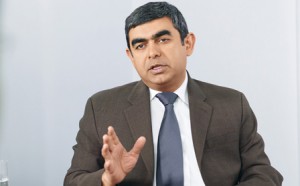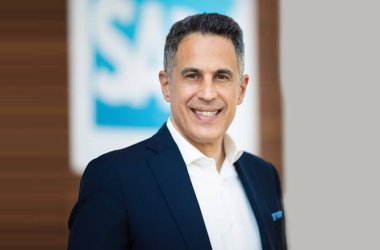 SAP’s technology chief has given a strong rebuttal to a recent presentation by an Oracle executive that was critical of SAP’s HANA in-memory database, saying it is full of “falsehoods.”
SAP’s technology chief has given a strong rebuttal to a recent presentation by an Oracle executive that was critical of SAP’s HANA in-memory database, saying it is full of “falsehoods.”
The presentation on Friday by Thomas Kurian, executive vice president of product development at Oracle, was meant to showcase Oracle’s recently introduced Exalytics product, which also incorporates in-memory processing.
But Kurian’s presentation also took aim at HANA, contending that its features are severely lacking in comparison to Exalytics in many functional areas as well as cost.
SAP has positioned HANA as suitable for both analytic and transactional application workloads, and as a central pillar for its technology strategy moving forward. Over time, SAP intends to lure customers now using Oracle’s flagship database underneath its ERP (enterprise resource planning) over to HANA, but the engineering work to make that possible isn’t completed yet.
Overall, Oracle views HANA as a serious threat to its database business and the contents of Kurian’s presentation reflects this, according to Vishal Sikka, executive board member and head of technology and innovation at SAP.
“We finally got their attention and they’re all losing it out in Redwood Shores. We’ve been laughing since Friday,” Sikka said in an interview this week.
Despite Sikka’s characterization of SAP’s mood, he exhibited a frustrated and irritated tone during the interview.
“These guys still keep saying HANA doesn’t scale out. That means one of two possibilities. They don’t want to believe it, or that they are just lying,” Sikka said.
Oracle also contended in the presentation that HANA doesn’t support unstructured data. This is inconceivable given that HANA is partly based on SAP’s TREX technology, an unstructured text search engine, Sikka said.
The presentation also states that HANA supports only “limited” and “non-standard SQL,” which is also false, Sikka said.
In addition, Oracle said that Exalytics is “significantly cheaper” than HANA, citing a US$135,000 price tag for the Exalytics hardware compared to more than $360,000 for a HANA machine on IBM hardware. HANA is available in appliance form from a number of hardware vendors.
The cost figure Oracle cited is wildly overblown compared to market averages for x86 servers these days, Sikka contended.
Oracle also compared pricing for the software, saying that licenses for a system with 1TB of RAM would cost $690,000 for Exalytics and $3.75 million for HANA.
Sikka said he had “no idea” how Oracle arrived at that cost for the HANA software. SAP sells HANA Enterprise Edition based on the amount of RAM in the system, going by 64GB units. Unit list pricing ranges from north of $100,000 each down to less than $5,000, depending on the volume purchased or “when embedded in a specific HANA app,” an SAP document states. SAP has also released a lower-cost HANA Edge edition for smaller companies, which lists for €40,000.
SAP executive Steve Lucas also responded to Oracle’s pricing representations in a blog post on Monday.
“HANA pricing is inclusive of everything you need, unlike Oracle which charges for the Database licenses & Exadata Storage as well as Grid licensing, Partitioning, OLAP, Diagnostics & Tuning Pack, Grid Control, etc,” wrote Lucas, who is executive vice president of business analytics, database and technology.
Asked why he chose to contact the media regarding Oracle’s presentation, given the possibility that doing so would simply draw more attention to Oracle’s statements, Sikka said SAP had little choice.
“If we were the leader in databases and some startup had done that, we would ignore it. But they [Oracle] have significantly higher reach in getting the message out about database technology. So we feel the need to correct these things,” he said.
The bottom line is that a head-to-head comparison of HANA to Oracle’s products doesn’t make sense, according to Sikka. “HANA to us represents the future of database architectures. This is the direction and this is our platform. We don’t want to get caught in these feature-to-feature comparisons to databases that have been around for 30 years,” he said.
Oracle’s arguments amount to complaining that an electric car doesn’t have spark plugs, Sikka added.
An Oracle spokeswoman declined to comment on SAP’s statements.
Overall, it’s important for customers to avoid getting too distracted by vendor chest-beating of this sort, said analyst Ray Wang, CEO of Constellation Research and author of a recent report on HANA.
Instead, they should seek to understand which use cases HANA is most suitable for right now, namely as a database replacement for SAP’s Business Warehouse, Wang said.
“Oracle has a lot of advanced features that customers don’t need for the use cases SAP is talking about,” Wang said.
However, customers looking to do things such as MOLAP (multidimensional online analytic processing) may be better served by Oracle’s products than HANA at this time, he added.





